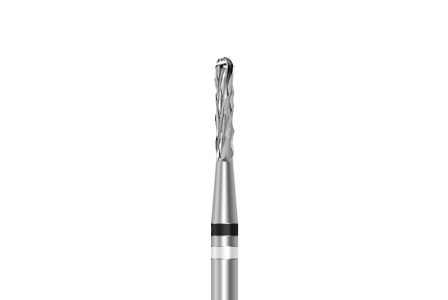I. Introduction
Dental burs are rotary cutting instruments used in dentistry for a variety of purposes, including preparing cavities, removing tooth structure, and shaping dental implants. They come in different shapes, sizes, and materials, and have evolved significantly since their earliest use in ancient times. This blog post will explore the evolution of dental burs, highlighting the different materials and designs used throughout history, and how they have advanced to the modern diamond-coated burs used today.
II. Evolution of Dental Burs
A. Flint burs
The earliest known dental burs were made of flint and used by ancient civilizations, such as the Egyptians and the Mayans. These burs were handcrafted and had limited functionality.
B. Bronze burs
Bronze burs were used in ancient Greece and Rome and were an improvement over flint burs. They were made by casting and had a wider range of shapes and sizes.
C. Steel burs
Steel burs were introduced in the 19th century and marked a significant advancement in dental bur technology. They were stronger and more durable than bronze burs and could be sharpened and reused.
D. Tungsten carbide burs
Tungsten carbide burs were introduced in the 20th century and quickly became popular due to their hardness and durability. They were made by sintering tungsten carbide powder and had a longer lifespan than steel burs.
E. Diamond-coated burs
The most recent advancement in dental bur technology is the diamond-coated bur. These burs are made by coating a tungsten carbide bur with diamond particles, which provide superior cutting ability and longevity. Diamond-coated burs are now widely used in modern dentistry for a range of procedures.
III. Advancements in Dental Bur Design
A. Shape and size
Dental burs come in various shapes and sizes, each designed for a specific task. As technology has advanced, the shapes and sizes of dental burs have become more precise and specialized, allowing for greater accuracy and efficiency in dental procedures.
B. Coating materials
The materials used to coat dental burs have also improved over time. Diamond-coated burs are the most advanced, but other coatings, such as zirconium nitride and titanium nitride, have also been developed and provide improved cutting ability and durability.
C. Manufacturing techniques
Advancements in manufacturing techniques have also improved dental bur design. Computer-aided design (CAD) and computer-aided manufacturing (CAM) have enabled the production of more precise and complex dental bur shapes, allowing for greater customization and efficiency in dental procedures.
IV. Applications of Dental Burs
Dental burs are used for a variety of procedures in dentistry, including:
Preparation of cavities for fillings
Removal of tooth structure for crowns or bridges
Shaping dental implants
Root canal treatment
V. Care and Maintenance of Dental Burs
Proper care and maintenance of dental burs are essential for their longevity and effectiveness. Dental burs should be cleaned and sterilized after each use, and should be stored properly to prevent damage or contamination.
VI. Conclusion
In conclusion, dental burs have come a long way since their earliest use in ancient times. Advancements in materials, design, and manufacturing techniques have allowed for greater precision, efficiency, and longevity in dental procedures. As technology continues to advance, it is likely that dental burs will continue to evolve and improve in the future.



